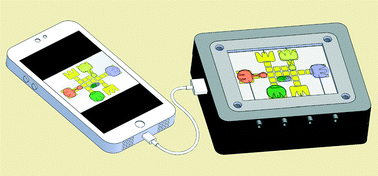A review of digital microfluidics as portable platforms for lab-on a-chip applications
Abstract
Following the development of microfluidic systems, there has been a high tendency towards developing lab-on-a-chip devices for biochemical applications. A great deal of effort has been devoted to improve and advance these devices with the goal of performing complete sets of biochemical assays on the device and possibly developing portable platforms for point of care applications. Among the different microfluidic systems used for such a purpose, digital microfluidics (DMF) shows high flexibility and capability of performing multiplex and parallel biochemical operations, and hence, has been considered as a suitable candidate for lab-on-a-chip applications. In this review, we discuss the most recent advances in the DMF platforms, and evaluate the feasibility of developing multifunctional packages for performing complete sets of processes of biochemical assays, particularly for point-of-care applications. The progress in the development of DMF systems is reviewed from eight different aspects, including device fabrication, basic fluidic operations, automation, manipulation of biological samples, advanced operations, detection, biological applications, and finally, packaging and portability of the DMF devices. Success in developing the lab-on-a-chip DMF devices will be concluded based on the advances achieved in each of these aspects.

- This article is part of the themed collections: Lab on a Chip Recent Review Articles and Lab on a Chip 2016 Most Downloaded Articles

 Please wait while we load your content...
Please wait while we load your content...